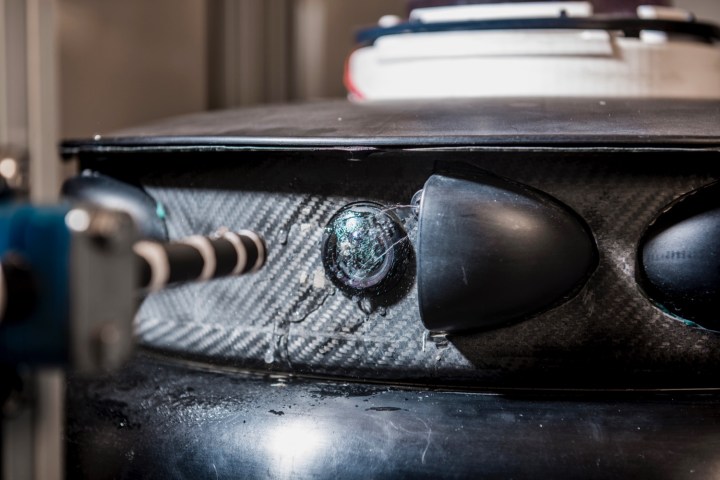
Self-driving cars are supposed to change the way we get around, but before they can do that, engineers have to solve a lot of problems related to them. Like what to do about bugs — the insect kind, not glitches. For human drivers, a bug-splattered vehicle is pretty inconsequential. But autonomous cars rely on an array of sensors to “see” their environment, and those sensors need to be kept clean of insects. So Ford came up with a way to bug-proof its cars’ sensors.
Figuring out how to keep self-driving cars’ sensors clean turned out to be messy work. Engineers built a “bug launcher” to shoot insects at the sensors, Venky Krishnan, Ford’s autonomous vehicle systems core supervisor, wrote in a blog post. They eventually settled on the “tiara” — the structure on the roof of Ford’s test cars that houses the collection of cameras, radar, and Lidar that make up the sensor suite — as the main line of defense.
One approach is to funnel air through slots in the tiara near camera lenses. This creates an “air curtain” that deflects bugs away from the cameras, Krishnan said. But that method isn’t 100-percent effective, so the tiara also has small nozzles near each camera lens. They can spray washer fluid onto the lenses to clean them off. The nozzles are controlled by a software algorithm, ensuring they’re only used when needed, so that no fluid is wasted, Krishnan said. When the lens is clean, air is channeled through a slot in the tiara to dry it off. A bug-cleaning system may sound like over-engineering, but details like this are vital to making autonomous cars work in the real world, Krishnan said.
“Just as we must equip self-driving vehicles with the brains to process what’s happening in their environment, we must also equip them with the tools to deal with that environment — no matter what kind of gunk it decides to throw at them,” he added.
The bug-cleaning system is already in use on Ford’s third-generation autonomous test vehicles. These modified Ford Fusion sedans are currently being tested on public roads in Detroit, Pittsburgh, Miami-Dade County, and Washington, D.C. Ford plans to launch an autonomous production car in 2021 for ridesharing and delivery services.


